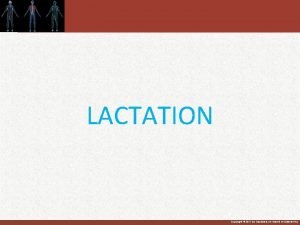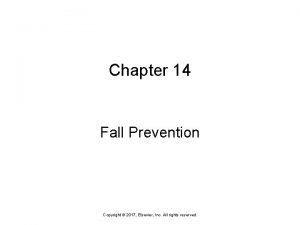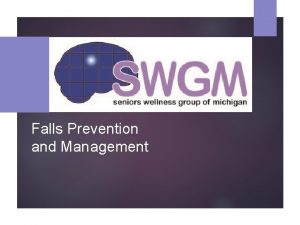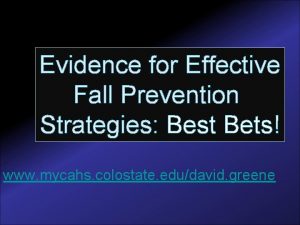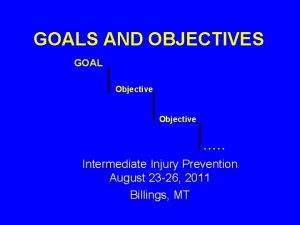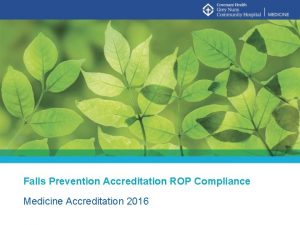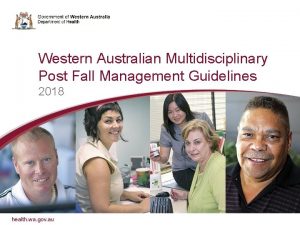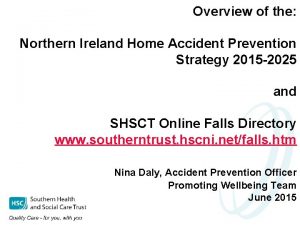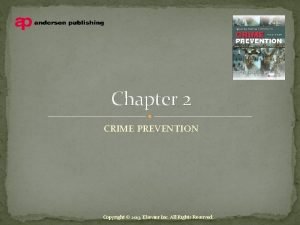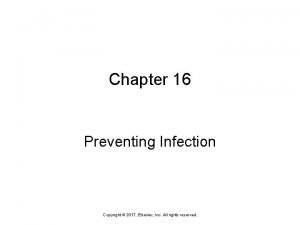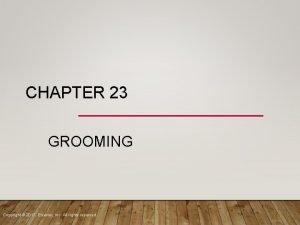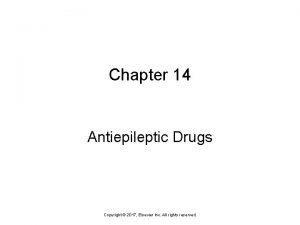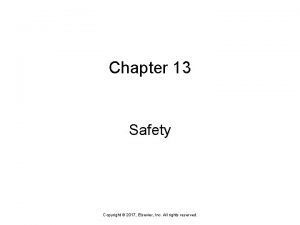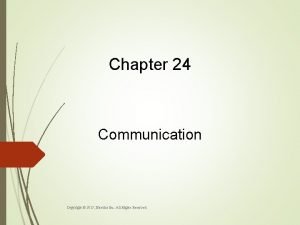Chapter 14 Fall Prevention Copyright 2017 Elsevier Inc









- Slides: 9

Chapter 14 Fall Prevention Copyright © 2017, Elsevier, Inc. All rights reserved.

Preventing Falls The risk of falling increases with age. A history of falls increases the risk of falling again. Falls are the most common accidents in nursing centers. Copyright © 2017, Elsevier, Inc. All rights reserved. 2

Causes and Risk Factors Most falls occur in patient and resident rooms and in bathrooms. Ø Causes include: • Poor lighting, cluttered floors, throw rugs, and out-ofplace furniture • Wet and slippery floors, bathtubs, and showers Needing to use the bathroom, usually to urinate, is a major cause of falling. Most falls occur between 1600 and 2000. Ø They also are more likely to occur during shift changes. Copyright © 2017, Elsevier, Inc. All rights reserved. 3

Fall Prevention Programs Agencies have fall prevention programs. Common sense and simple safety measures can prevent many falls. Ø The health team works with the person and family to reduce the risk of falls. Ø The goal is to prevent falls without decreasing the person’s quality of life. Ø Copyright © 2017, Elsevier, Inc. All rights reserved. 4

Fall Prevention Programs (Cont. ) Bed rails Ø Ø Ø Bed rails are raised and lowered. Bed rails lock in place with levers, latches, or buttons. They are half, three-quarters, or the full length of the bed. The nurse and care plan tell you when to raise bed rails. Bed rails are needed by: • Persons who are unconscious or sedated with drugs • Some confused or disoriented people Ø If a person needs bed rails, keep them up at all times except when giving bedside nursing care. Copyright © 2017, Elsevier, Inc. All rights reserved. 5

Fall Prevention Programs (Cont. ) Bed rails present hazards. Ø Entrapment is a risk. Bed rails are considered restraints if the person cannot: Get out of bed Ø Lower them without help. Ø Accrediting agency standards and federal and state laws affect bed rail use. If a person uses bed rails: Check the person often. Ø Report to the nurse that you checked the person. Ø Record your observations when you check on the person, if you are allowed to chart. Ø Copyright © 2017, Elsevier, Inc. All rights reserved. 6

Fall Prevention Programs (Cont. ) Hand rails and grab bars Ø Hand rails are in hallways and stairways. • They give support to persons who are weak or unsteady when walking. Ø Grab bars are in bathrooms and in shower/tub rooms. • They provide support for sitting down or getting up from a toilet. • They are used for getting in and out of the shower or tub. Bed wheels are locked at all times except when moving the bed. Ø Wheelchair and stretcher wheels also are locked during transfers. Copyright © 2017, Elsevier, Inc. All rights reserved. 7

Transfer/Gait Belt A transfer belt (gait belt) is a device used to support a person who is unsteady or disabled. Ø It helps prevent falls and injuries. A transfer/gait belt is always applied over clothing. The belt buckle is never positioned over the person’s spine. Copyright © 2017, Elsevier, Inc. All rights reserved. 8

The Falling Person Falling may be caused by: Weakness, light-headedness, or dizziness Ø Fainting Ø Slipping or sliding on spills, waxed floors, throw rugs, or improper shoes Ø Do not try to prevent the fall. Ø If a person starts to fall, ease him or her to the floor. Do not let the person move or get up before the nurse checks for injuries. An incident report is completed after all falls. Copyright © 2017, Elsevier, Inc. All rights reserved. 9
 Primary prevention secondary prevention tertiary prevention
Primary prevention secondary prevention tertiary prevention Saunders an imprint of elsevier inc
Saunders an imprint of elsevier inc Chapter 14 fall prevention
Chapter 14 fall prevention Copyright secondary sara (2017) answers
Copyright secondary sara (2017) answers Fall prevention quiz
Fall prevention quiz L'eq
L'eq Examples of smart goals for fall prevention
Examples of smart goals for fall prevention S-p-l-a-t-t fall prevention
S-p-l-a-t-t fall prevention Post fall management guidelines
Post fall management guidelines Mullinure hospital armagh
Mullinure hospital armagh

